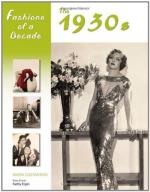|
This section contains 174 words (approx. 1 page at 300 words per page) |

|
Violence was commonplace during strikes. Companies hired men from the lowest rungs of society to break strikes and patrol the factories. Spies and moles among the workers informed company officials of union activity. Often, the local and state authorities sided with the employers and used their superior manpower and weaponry to coerce strikers. In the San Francisco strike police, strikebreakers, and workers viciously battled with baseball bats, bricks, and tear gas on 3 July, and the violence culminated on 5 July, or "Bloody Thursday." The 5 July battle lasted the entire day and was so ferocious that many bystanders and innocent citizens were injured. In the end the poorly armed workers could not withstand the power of the police, and by nightfall two workers were dead and sixty-seven others were seriously injured. The governor of California, Frank E. Merriam, sent in the National Guard to restore order in...
|
This section contains 174 words (approx. 1 page at 300 words per page) |

|




